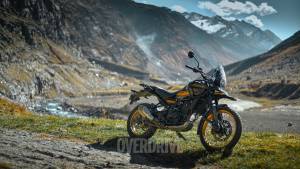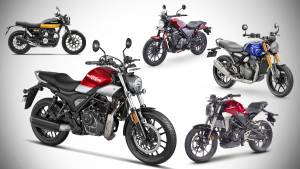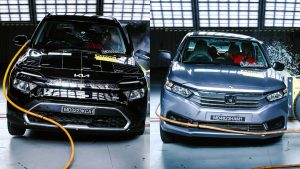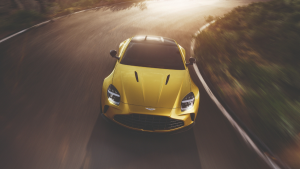Royal Enfield Himalayan gets ready for debut
The Royal Enfield Himalayan name and speculation appeared so long ago and became so sticky that you might imagine that it has been in development for the 115 years that the Royal Enfield brand has been around. The images of the prototypes have been leaking so steadily that it could only been orchestrated rather than an actual security problem at the company. But it has proved, so far, to be a good marketing strategy and the Royal Enfield Himalayan has to be amongst the most-awaited motorcycles in India. Ten-odd days to go to the debut of the motorcycle, a lot more information has come to light. This time it isn't a leak, it's direct from the maker. We do believe that the motorcycle will be shown on February 2, 2016 in Delhi but we are sure that Royal Enfield does not intend to commercially launch the motorcycle, holding the prices and bookings for a later date, mid-February would be our guess. Here's what we know about the Royal Enfield Himalayan, including the new information and details.
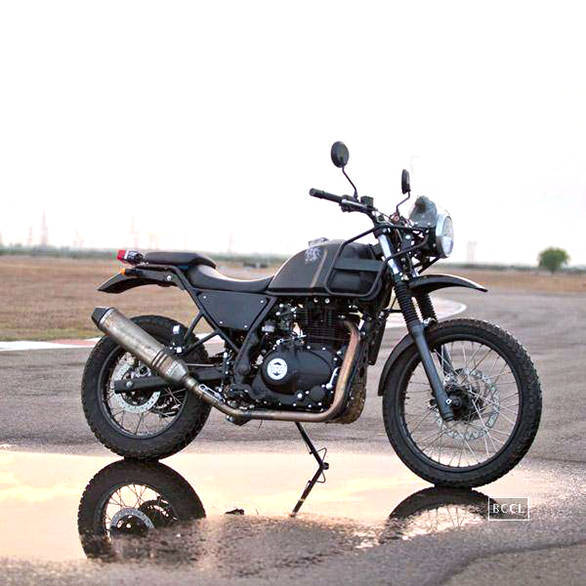
It is a new platform
There was some speculation that the Royal Enfield Continental GT's new double cradle frame, created by UK's Harris Performance, would underpin the Himalayan. Perhaps, but in effect, the Himalayan has an all-new double cradle frame. This is because the changes needed to switch from a twin-shock rear suspension (Continental GT) to linkage-type monoshock is significant enough for the frame to be considered all-new. In fact, by February, Royal Enfield and TVS Motor will both have debuted their first monoshock-equipped motorcycles (click here to read our review of the TVS Apache RTR 200 4V). The monoshock and the nature of the motorcycle will mean a new swingarm, new wheelbase as well as completely new front-end geometry.
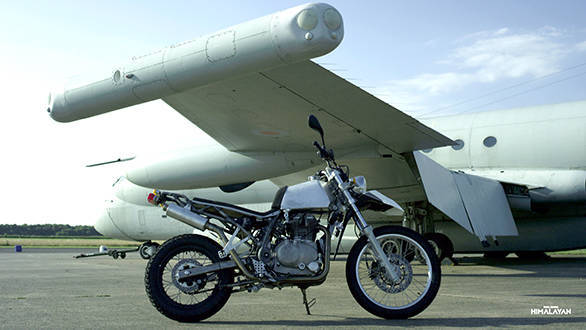
In that frame will sit Royal Enfield's new engine, the LS400. The LS400 is likely to be a 410cc single cylinder engine that is completely new. The new videos suggest a 25PS power output but that video was shot during the development phase and we believe the power output will be closer to 30PS, which is reasonably unstressed for a 400-410cc engine. That unstressed nature should also allow Royal Enfield to produce exceptional torque. For instance, the Mahindra Mojo uses its 30Nm peak torque to great effect. The Himalayan could sit closer to 40Nm which will make the midrange on the motorcycle phenomenal. Indeed, Siddarth Lal, the CEO commented in his blog on Times of India that cruising in the 80-110kmph range was tremendous and "not placid." The engine does have overhead valves. We expect to see a two-valve SOHC setup but we will be really thrilled to see a four-valve SOHC set up - it will allow Royal Enfield to expand the platform to other purposes far more easily. The oil-cooler is also clearly visible on the right side of the motorcycle, mounted vertically behind a protective grille.
What comes as a surprise is that the motorcycle will use a carburettor rather than fuel injection - the fuel petcock is clearly visible in the CS Santosh video. Lal writes in his blog that the company wanted to use the minimum of materials to create a reliable motorcycle. We know that carburettors handle altitude changes far, far worse than fuel injection systems. So that decision is a little strange. However, we do expect that Royal Enfield has a fuel injected version ready. This version will most likely head to export markets first and then come to India. Also remember that KTM told us that the next step in European emissions were so tight that most people would have to go to ride-by-wire to meet that requirement. Royal Enfield will definitely have fuel injection at the very least ready to roll.
The engine does sound interesting. It has none of the thump that RE is famous for and that's not a bad thing. It sounds like a crisp unstrained engine though we don't know if the exhaust in the video is stock or aftermarket.
You will be buying an unfinished motorcycle
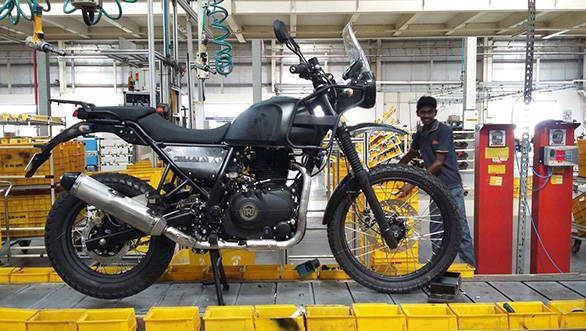
If you notice the prototypes along the way, you will notice that the motorcycle looks strangely unfinished. Like a jig-saw puzzle with the final few pieces missing. We believe this is intentional. The new photographs show a near-final spec motorcycle and it still looks less than complete. The reason is, we believe, that Royal Enfield is working towards an accessory catalogue of unprecedented size of the company. The final spy shot before the company went online with the Himalayan showed a motorcycle with hard cases at the back and Rotopax-style fuel cans mounted on the little subframe that sits at the front of the narrow tank. Siddartha Lal mentions in his blog at Times Of India that the bike will come with "integral" luggage and fuel jerry cans. This should turn out to be a top model with the luggage and fuel cans as standard equipment that sits above a more stripped back lower priced model. Royal Enfield has also tied with with Rev'it for a multi-season riding suit, another aspect of the accessory line. Make no mistake. The basic Himalayan without any additions will be completely rideable and easy to live with. It is a production motorcycle and in that sense, it will meet all Indian regulatory and customer requirements. However, we believe Royal Enfield's accessory lines will be hard to ignore. Hide your cheque books, people.
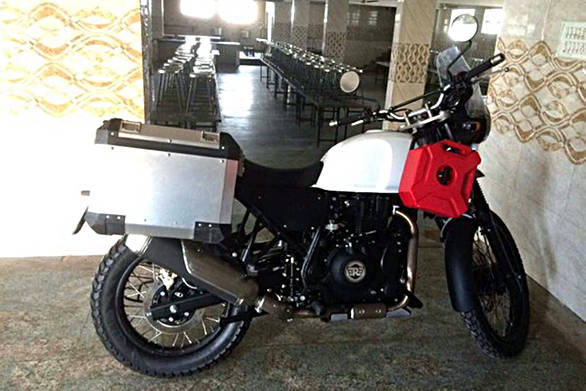
It won't be a motocrosser, though
Despite the videos of CS Santosh (click here, to see how he fared in the 2016 Dakar) scampering around at his Big Rock MotoPark on the Himalayan, you shouldn't mistake the motorcycle for a dirt bike. A hard core dirt bike requires suspension specification that will blow the roof off pricing and introduce compromises that will make it harder to use on the road. But it will be more capable than all of the previous Royal Enfields when the tarmac ends. Allow me to explain.
Royal Enfield's Sachin Chavan, appears in the development video saying that they did not want to go down the 17-inch front wheel route as some adventure tourers are doing. That comment has many implications. First of all, it leads directly to the fact that the Himalayan uses a 21-inch front wheel matched to a 17-inch rear. That's a clear sign of intent. Most hardcore off-roaders choose 21-inch front and 19- or 18-inch rear wheels. That's because bigger wheels are better off-road for stability as well as control. On the road through, these wheels can feel imprecise and reduce rider confidence. We are also pretty sure that the tyres on these bikes are Ceat Gripp tyres. The Gripps have always had an off-road intent, but for the Himalayan, they are a new tread design which should prove to be both on- and off-road friendly. The way I understand it, a 90/90-21 up front is wide enough to work in most situations without being too heavy and making steering effort unduly high. On the flip side, the 17-inch rear is probably also driven by weight concerns - heavy tyres will make the suspension work that much harder.
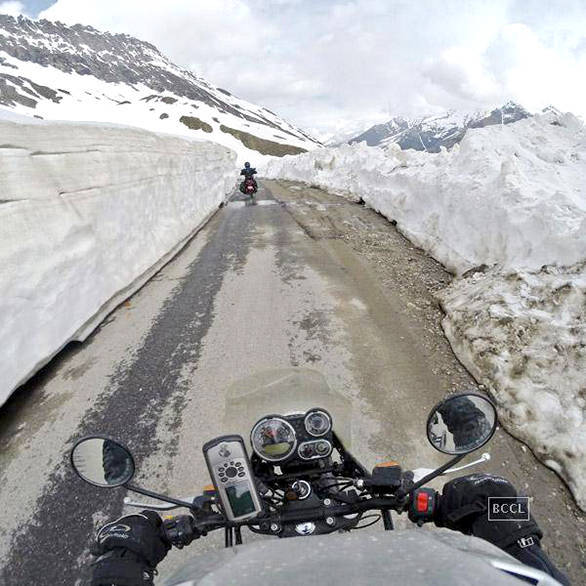 Earlier spy shots reveal that the big dial is the speedo with the digital bottom half offering other information. The small circular dial top right is the tachometer on the Royal Enfield Himalayan
Earlier spy shots reveal that the big dial is the speedo with the digital bottom half offering other information. The small circular dial top right is the tachometer on the Royal Enfield Himalayan
Second, the tyre size selection also rings true to the Royal Enfield assertion that the Himalayan was built to live up to is name. Riding in the Himalayas is challenging but it is far from a rocky trail or a motocross track. The Himalayan will be set up for a great ride quality and once you're stood up on the pegs, the big wheels and the suspension should allow you to work the bike pretty hard over open terrain. The reference here for Royal Enfield, we believe, is their own existing line-up which often wear tyres chosen for their grip both on- and off-road. As Royal Enfield themselves like to say, they want to be in the middle of the action and bikes that reach for the extremes can alienate and intimidate. We expect the Himalayan to be a good on-road tourer and remain in its element once the road ends. It won't be designed to land 40-foot jumps and that's perfectly in sync with its role and intent.
Will it get ABS?
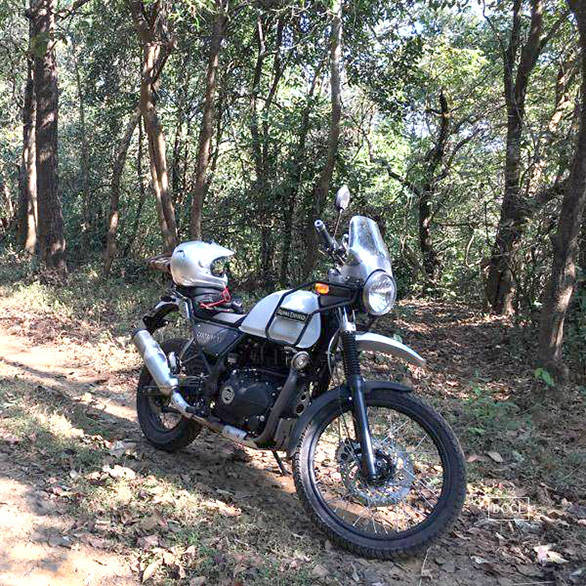
We hope so. Royal Enfield's current set of shots do not show the brakes clearly enough but the brakes all wear Brembo logos. We expect that the impending prospect of the mandatory ABS law in India plus the need for ABS in most exports markets, especially USA and Europe, means that the Royal Enfield Himalayan will probably get ABS as standard if not at Indian launch then shortly afterwards.
What will the price be?
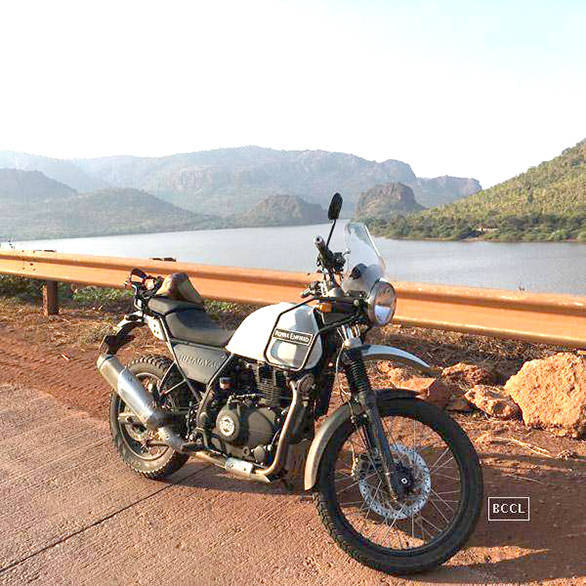
A lot of American websites are speculating that Royal Enfield will price the Himalayan at around the $5,000 mark, which is roughly where the KTM 390 Duke, Honda CBR300R, Kawasaki Ninja 300 and the Yamaha YZF-R3 are priced. If this were true then the Royal Enfield Himalayan should be priced at the same level that the Continental GT is. I believe that Royal Enfield is consciously sticking as close as possible to the pricing of the Continental GT. The launch models will probably be the lowest spec - using carburettors and non-ABS brakes to achieve that price point - around Rs 1.8 lakh ex-showroom and Rs 2.1 lakh on-road. Eventually, the company will introduce both fuel injection and ABS and create the top-end models that will hit Rs 2.3 lakh on-road - again, these are our guesses. All will be revealed on February 2, 2016.
To stay at the cutting edge of automotive news in India, follow us on twitter (@odmag) or on facebook (facebook.com/odmag). Or download our app from the iOS or Android app stores today.
Image source: timesofindia.indiatimes.com
Everything that we know about the Royal Enfield Himalayan
Royal Enfield Himalayan gets ready for debut
Royal Enfield Himalayan to be showcased in India on February 2, 2016
Image gallery: 2016 Royal Enfield Himalayan
Image gallery: 2016 Royal Enfield Himalayan spied
Videos: 2016 Royal Enfield Himalayan
Starts Rs 2,01,000
411cc
5-Speed
24.30
32.00
-NA-
Starts Rs 3,18,000
296cc
6-Speed
39.00
26.10
-NA-
Starts Rs 2,52,928
373cc
6-Speed
43.50
37.00
25.00 Kmpl
-NA-
295cc
6-Speed
26.29
30.00
-NA-
Starts Rs 1,10,388
198cc
5-Speed
20.53
16.80
-NA-
Starts Rs 1,27,500
198cc
5-Speed
20.82
17.25
-NA-
Starts Rs 1,02,700
149cc
5-Speed
12.40
13.60
-NA-
Starts Rs 3,50,180
321cc
6-Speed
42.00
30.00
-NA-
Related Stories
Top Stories
Latest Videos
Most Popular
- Budget Sportbike Showdown: Kawasaki Ninja 500 vs Aprilia RS 457 vs Yamaha YZF-R3
- Mumbai-Pune Expressway speed restrictions updated
- Upcoming Mahindra XUV 3XO: All you need to know
- 2014 Triumph Daytona 675 vs 2024 Kawasaki ZX6R - A Decade of Evolution in Supersport Motorcycles
- 2024 Hyundai Creta vs Toyota Urban Cruiser Hyryder vs Skoda Kushaq comparison review - the hype is real?
